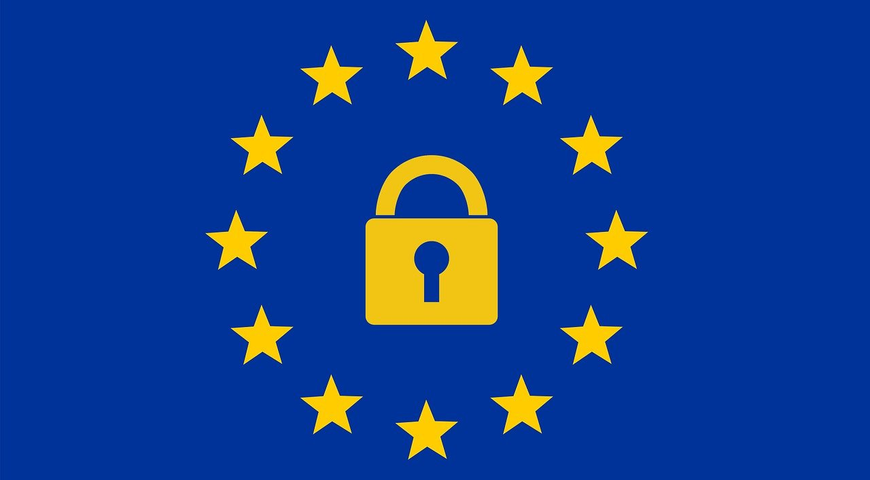
The General Data Protection Regulation (GDPR) isn’t new, yet many organizations still struggle to meet its requirements. Why? It’s in part, at least, because GDPR is just plain hard to follow. As it turns out, meticulously protecting the personal data of 450 million citizens of the European Union (EU) isn’t easy.
Most IT professionals, managed service providers (MSPs) and business leaders know what GDPR is. Many know what it requires. Fewer know how to satisfy data storage requirements and other regulated areas. Some basic best practices, however, and the right solutions can enable organizations to achieve and stay in compliance with GDPR.
The core of GDPR compliance
As a brief refresher, GDPR is a set of regulations designed to protect the personal data of EU citizens and give them greater control over how organizations use their data. It defines personal data broadly, including information like names, email addresses, IP addresses and even genetic or cultural information.
The regulation affects any organization that handles the data of EU citizens, regardless of where the organization or the citizen is located. That means almost every organization is likely to encounter GDPR at some point.
Key principles of GDPR require that organizations:
- Process data lawfully and with transparency.
- Collect and process data only for a specific, legitimate purpose.
- Collect only the minimum amount of data necessary.
- Ensure the data is accurate and kept up to date.
- Take responsibility for their data practices and be able to demonstrate compliance.
EU citizens have the right to delete or alter their data at will, and organizations must comply. Those organizations also have a responsibility to protect citizens’ data or face fines and penalties.
GDPR and cybersecurity: A continuing struggle
Cybersecurity is not just a best practice — it's a legal requirement under GDPR. The regulation mandates that organizations that collect and store data, known as data controllers and processors, to implement a level of security appropriate to the risk citizens take when sharing their information. Banking information, for instance, requires stronger protection than a simple email address.
And GDPR is a regulation that has severe consequences for non-compliance. Failure to protect data can lead to severe penalties, including fines up to €20 million or 4% of annual global revenue. But many organizations still grapple with it.
- Lack of access control measures: GDPR broadly stipulates that organizations have an obligation to restrict access to data. Multifactor authentication (MFA) is generally the most effective method of restricting data access, but many organizations do not consistently require it. Failure to provide adequate access restrictions can cause organizations to run afoul of GDPR and data storage regulations. MFA is essentially a baseline requirement.
- No centralized process for data-subject requests: When EU residents exercise their right to make requests regarding changes to or deletion of their data, many organizations aren’t ready to respond. Many generic data storage controllers rely on inefficient and error-prone manual processes to respond to access, deletion or rectification requests, slowing down response times and putting them in danger of failing to meet GDPR requirements.
- Delayed or missed breach notifications: Organizations often aren’t prepared to notify a supervisory authority of a data breach within the required 72-hour window as GDPR requires. They also frequently don’t have a way to notify individuals involved “without undue delay.” Breaches that go undetected can compromise the data of massive numbers of users, making notifications that much more difficult and embarrassing.
- No formal security-by-design practices: Data collections that don’t offer data protection “by design and default” are out of compliance with GDPR. Organizations must have systems in place that are designed with embedded privacy and security controls up front. Cybersecurity capabilities must in place by default — not just in certain situations or applications — for every user in the EU. Treating data protection as an add-on or nice-to-have feature is not an option.
- Unreliable or untested backups: The ability to retrieve data at a moment’s notice is a critical element of data storage GDPR compliance. Slow retrieval of information could put an organization out of compliance. For many organizations, disaster recovery plans exist on paper but might not work in case of an actual disaster, cyberattack or other catastrophic incident. Failure to back up and retrieve data can lead to financial penalties. Worse, some organizations aren’t sure about the reliability of their backups at all. Reliable backup is one of the most essential capabilities data controllers must have to stay in compliance with GDPR.
How organizations can maintain GDPR compliance
Achieving and maintaining GDPR compliance is nearly impossible without the right solutions in place. Organizations need a comprehensive set of capabilities to overcome barriers to GDPR compliance. And for management purposes, it’s far easier and cheaper if those solutions are part of a unified platform with a single interface for controlling everything.
Which backup providers meet Sarbanes-Oxley (SOX) and GDPR requirements?
Acronis Cyber Protect and Acronis Cyber Protect Cloud are designed to enable organizations to meet and exceed GDPR requirements as well as the requirements of SOX and other data storage regulations. Acronis combines data protection and cybersecurity to create a unified solution that addresses key compliance challenges.
Ease of management with a unified platform is probably the most valuable feature Acronis delivers. With other vendors, backup, antivirus, patch management and vulnerability assessment require four separate consoles for management. That can lead to four different engineers working at a customer’s site, a situation that can quickly become complex and expensive. With Acronis Cyber Protect and Acronis Cyber Protect Cloud, a technician can manage all of the key elements of data protection in one console.
Here’s how the natively integrated Acronis platform helps with specific GDPR requirements:
Acronis ensures data availability with disaster recovery failover, so information is available whenever an organizations needs it, even after a disaster or incident. Continuous data protection, along with threat detection and automated response. Those capabilities ensure that organizations process data according to GDPR Article 32, which requires data controllers and processors to ensure a level of security appropriate to the risk. Continuous availability and the ability to restore data promptly enable organizations to satisfy the requirements laid out in Article 32 and to ensure data integrity and confidentiality.
How does automated breach detection help with GDPR reporting?
Automated attack detection and guided incident response enable organizations to stop attacks before they can do any damage. Real-time detection helps protect data as well as giving the organization forensic insights into incidents that help with reporting a timeline of events to supervisory authorities. Automated detection also enables organizations to meet the 72-hour notification deadline for a data breach.
What is security by default?
With Acronis solutions, proactive protection is always automatically on. Organizations don’t have to do any work of their own to comply with GDPR’s requirement of data protection “by design and by default.”
Under GDPR, privacy settings must default to the highest protection level, so a controller should only process data necessary for a specific purpose and should limit storage. Acronis’ proactive data storage protection takes the burden off of technical teams by ensuring that organizations meet the privacy requirement automatically.
Does GDPR require disaster recovery?
Acronis makes it simple and reliable to meet data access requests and recover from incidents. With Acronis, organizations can maintain reliable backups and run recovery tests to ensure data availability.
Acronis combines AI-powered anti-ransomware tools, exploit prevention, vulnerability scans, endpoint protection, and backup and recovery, all in a unified platform. A natively integrated platform simplifies GDPR compliance by covering multiple threat vectors in one system, reducing complexity and operational overhead compared with solutions from other vendors that are cobbled together and not natively integrated.
What’s more, Acronis enables non-IT professionals to recover data rapidly and easily, with just one click. Acronis provides safe recovery that removes malware from backups during restore so that it can’t continue to affect systems and data. With Acronis platforms, business and IT professionals in organizations can rest easy knowing that an incident won’t shut down their operations.
What are the regulations for data minimization and retention and data subject rights under GDPR?
Acronis enables organizations to manage backup archive retention rates, helping them comply with the critical GDPR principle of data minimization by only keeping data for as long as necessary.
Acronis solutions also provide the functionality to search for and manage personal data within backups. This is essential for honoring a data subject's "right to be forgotten" and other rights, such as the right to access and rectify their data. Acronis solutions also allow for easy data export in a common format to meet data portability requirements.
Advanced search inside backups, easy data deletion, export for portability, customizable retention rules and detailed audit logs help organizations efficiently comply with GDPR rights such as access, rectification, erasure and data portability.
Advanced data subject rights, including data access, correction, deletion and portability across multiple clients, enable MSPs to handle GDPR requests efficiently. Advanced search inside backups and easy data export simplify locating and managing personal data, while customizable retention rules ensure compliance with data minimization requirements. Detailed audit logs help MSPs demonstrate accountability during audits.
All of those capabilities reduce manual work and compliance risks, making it easier for MSPs to meet strict GDPR obligations on behalf of their clients while maintaining operational efficiency and trust.
MSPs know that tool sprawl and complexity make managing clients’ security environments a challenge. They need a platform that combines critical cybersecurity capabilities in one place, which is exactly what Acronis Cyber Protect Cloud delivers.
What are the rules for transferring data outside the EU?
Acronis’ cloud architecture gives organizations control over where data is stored, helping them comply with GDPR data-location and data-retention requirements.
With cybersecurity solutions from Acronis, organizations can not only protect against modern threats but also build a foundation for long-term GDPR compliance.
About Acronis
A Swiss company founded in Singapore in 2003, Acronis has 15 offices worldwide and employees in 50+ countries. Acronis Cyber Protect Cloud is available in 26 languages in 150 countries and is used by over 21,000 service providers to protect over 750,000 businesses.



